
The Dark Tower: The Gunslinger is a dark-fantasy novel by American author Stephen King. It is the first volume in his Dark Tower series. The Gunslinger was first published in 1982 as a fix-up novel, joining five short stories that had been published between 1978 and 1981. King substantially revised the novel in 2003; this version has remained in print ever since, with the subtitle "RESUMPTION". The story centers Roland Deschain, the last gunslinger, who has been chasing his adversary, "the man in black," for many years. The novel fuses Western fiction with fantasy, science fiction, and horror, following Roland's trek through a vast desert and beyond in search of the man in black. Roland meets several people along his journey, including a boy named Jake, who travels with him part of the way.

In ancient Greek religion and mythology, the Moirai —often known in English as the Fates—were the personifications of destiny. They were three sisters: Clotho, Lachesis, and Atropos. Their Roman equivalent is the Parcae.
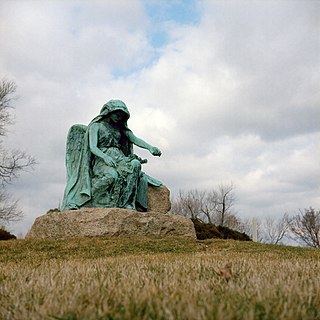
Clotho or Klotho, is a mythological figure. She is the youngest goddess of the Three Fates or Moirai. In ancient Greek mythology, she spins the thread of human life, her sisters draw out (Lachesis) and cut (Atropos) the thread. Her Roman equivalent is Nona. She also made major decisions, such as when a person was born, thus in effect controlling people's lives. This power enabled her not only to choose who was born, but also to decide when deities or mortals were to be saved or put to death. For example, Clotho resurrected Pelops when his father killed him.
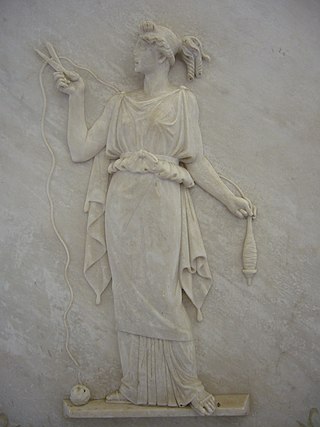
Atropos, in Greek mythology, was the third of the Three Fates or Moirai, goddesses of fate and destiny. Her Roman equivalent was Morta.
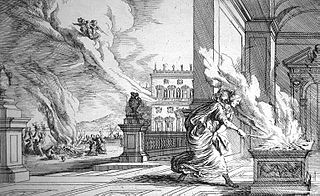
Althaea or Althea was the queen of Calydon in Greek mythology.

Pet Sematary is a 1983 horror novel by American writer Stephen King. The novel was nominated for a World Fantasy Award for Best Novel in 1984, and adapted into two films: one in 1989 and another in 2019. In November 2013, PS Publishing released Pet Sematary in a limited 30th-anniversary edition.

Derry is a fictional town in the U.S. state of Maine that has served as the setting for a number of Stephen King's novels, novellas, and short stories, notably It. Derry first appeared in King's 1981 short story "The Bird and the Album" and has reappeared as recently as his 2011 novel 11/22/63.

The name death's-head hawkmoth refers to any of three moth species of the genus Acherontia. The former species is found throughout Africa and in Europe, the latter two are Asian; most uses of the common name refer to the African species. These moths are easily distinguishable by the vaguely human skull-shaped pattern of markings on the thorax. They are large nocturnal moths with brown and yellow or orange coloring, and all three species are fairly similar in size, coloration and life cycle.
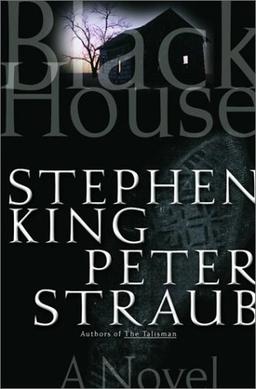
Black House is a horror (collaborative) novel by American writers Stephen King and Peter Straub. Published in 2001, it is the sequel to The Talisman. This is one of King's numerous novels, such as Hearts in Atlantis and Insomnia, which tie in with the Dark Tower series. Black House was nominated for the Bram Stoker Award for Best Novel.
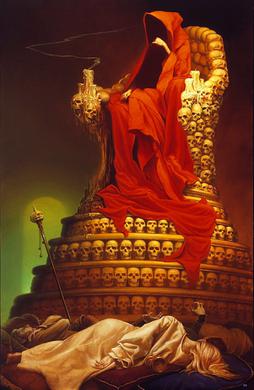
The Crimson King, known to some as Los' or Ram Abbalah, is a fictional character created by Stephen King and the main antagonist of King's eight-volume Dark Tower series, as well as the novels Insomnia (1994) and Black House (2001). Described as "Gan's crazy side", the Crimson King is the ultimate ruler of the Red, and the archetypal embodiment of evil in Stephen King's fictional multiverse. His goal is to topple the Dark Tower which serves as the linchpin of time and space, destroying the multitude of universes which revolve around it so that he can rule in the primordial chaos which follows.
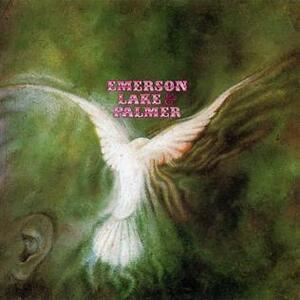
Emerson, Lake & Palmer is the debut studio album by English progressive rock band Emerson, Lake & Palmer. It was released in the United Kingdom by Island Records in November 1970, and in the United States by Cotillion Records in January 1971. After the group formed in the spring of 1970, they entered rehearsals and prepared material for an album which became a mix of original songs and rock arrangements of classical music. The album was recorded at Advision Studios in July 1970, when the band had yet to perform live. Lead vocalist and bassist/guitarist Greg Lake produced it.
Achlys, in the Hesiodic Shield of Heracles, is one of the figures depicted on Heracles' shield, perhaps representing the personification of sorrow. In Homer, achlys is the mist which fogs or blinds mortal eyes. Her Roman counterpart Caligo was said to have been the mother of Chaos. In Nonnus's Dionysiaca, she seems to be a witch.
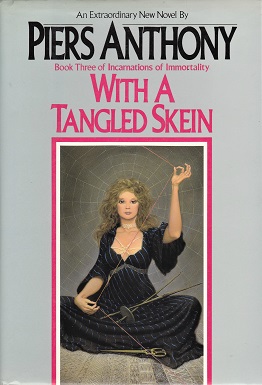
With a Tangled Skein is a fantasy novel by Piers Anthony. It is the third of eight books in the Incarnations of Immortality series. In it, Niobe agrees to become one of the three aspects of the incarnation of Fate, in an attempt to thwart the plans of Satan.

The Fates are a common motif in European polytheism, most frequently represented as a trio of goddesses. The Fates shape the destiny of each human, often expressed in textile metaphors such as spinning fibers into yarn, or weaving threads on a loom. The trio are generally conceived of as sisters and are often given the names Clotho, Lachesis, and Atropos, which are the names of the Moirai, the version of the Fates who appear in Greek mythology. These divine figures are often artistically depicted as beautiful maidens with consideration to their serious responsibility: the life of mortals. Poets, on the other hand, typically express the Fates as ugly and unwavering, representing the gravity of their role within the mythological and human worlds.
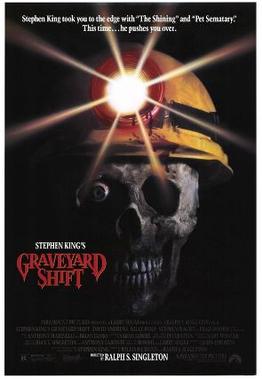
Graveyard Shift is a 1990 American horror film directed by Ralph S. Singleton, written by John Esposito, starring David Andrews, Stephen Macht, Kelly Wolf, and Brad Dourif, and based on the 1970 short story of the same name by Stephen King which was first published in the October 1970 issue of Cavalier magazine, and later collected in King's 1978 collection Night Shift. The film was released in October 1990.

Atropos, or The Fates is one of the 14 Black Paintings painted by Francisco de Goya between 1819–1823. Goya, then 75 and in mental and physical despair, created the series directly onto the interior walls of the house known as the Quinta del Sordo, purchased in 1819.

Missa Atropos is the sixth studio album by Norwegian rock band Gazpacho. It was released in Norway on 15 September 2010 by HWT Records and worldwide on 22 March 2011 by Kscope.
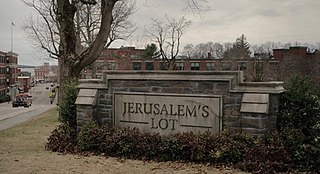
Jerusalem's Lot, Maine is a fictional town and a part of writer Stephen King's fictional Maine topography. 'Salem's Lot has served as the setting for a number of his novels, novellas, and short stories. It first appeared in King's 1975 novel 'Salem's Lot, and has reappeared as late as his 2019 novel The Institute. The town is described as being located in Cumberland County, between the towns of Falmouth, Windham, and Cumberland, near the southern part of the state about 10 miles north of Portland. A map on King's official website, though, places 'Salem's Lot considerably further north, approximately in Northwest Piscataquis.
Gage William Creed is a fictional character created by Stephen King who is the primary antagonist of his 1983 novel Pet Sematary. In the novel, Gage is an innocent child who is accidentally killed by a speeding tanker truck. Gage's grieving father Louis brings him back to life by burying him in the titular cemetery, which is possessed by a Wendigo. Once reanimated, Gage is controlled by the Wendigo's evil spirit and murders his mother, Rachel, and their neighbor, Jud Crandall. Gage was portrayed in the 1989 film adaptation of the novel by Miko Hughes. He was portrayed in the 2019 remake by twins Hugo and Lucas Lavoie. Gage was also portrayed in a small cameo appearance by his creator, Stephen King, in the 1997 miniseries adaptation of The Shining. Gage is briefly mentioned in King's 1994 novel Insomnia, though he never makes an appearance.

















